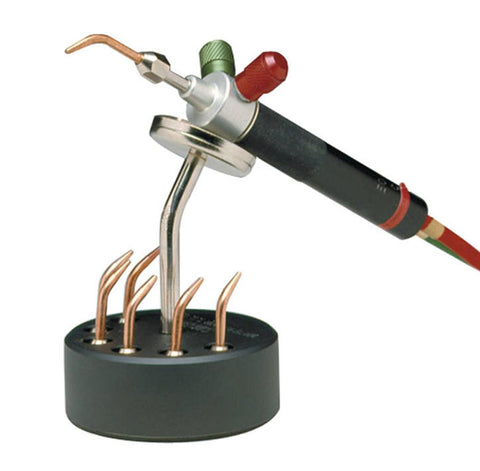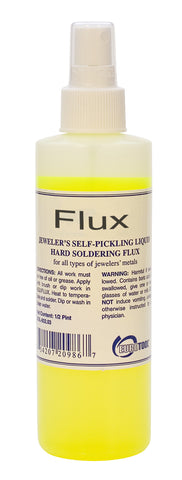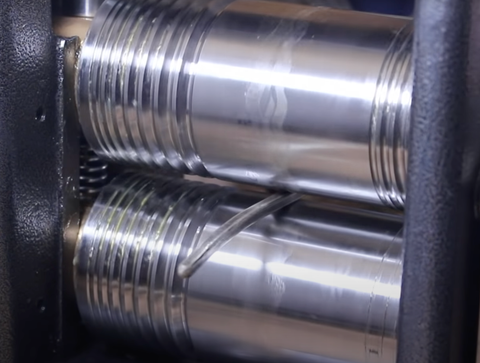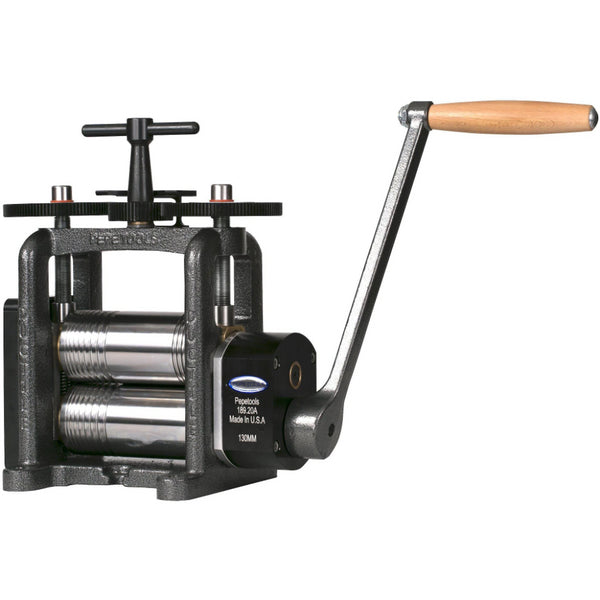Why recycle?
When working with precious metals it pays to be frugal. It’s vital to reduce wastage in order to maximize your profits. Recycling your scrap, offcuts, and leftovers can help recover some of the materials cost.
Selling your scrap to bullion dealers may seem like easy money. But this can be costly. When you buy sheet and wire new, you are paying full price. But when you send the same metal to the bullion dealers, you will only receive the scrap price, which will be much less than the price you paid new. Especially with gold, this difference can quickly cost you a lot of money. You are buying gold and silver at full price and selling it for less as scrap. But by recycling the scrap yourself, you can turn this loss into a huge cost saving…

Scrap silver offcuts ready to be recycled.
For myself, no metal goes out of my workshop until it is a finished piece of jewelry. I make offcuts and leftovers as I work, but ‘everything’ is recycled and reused.
I don’t sell any precious metal as scrap; I sell it as full price Jewellery.
Furthermore, I also buy scrap from customers and fellow jewelers. Buying metal for scrap price is a huge cost saving over buying new wire and sheet. With large projects, especially gold, using scrap saves me a lot of money in materials costs.
Recycling doesn’t have to be difficult or time consuming. With the right tools, you can quickly turn scrap into new sheet and wire. Here’s how…
Keep your scrap pure.
The first and most important point is to identify your metal and keep it pure. As you work, collect all your offcuts in clearly labeled pots. Do not mix metals or karats. Keep your work area tidy. Use a tray under your bench peg to collect filings and offcuts. Sweep it out after each job, storing the scraps in the appropriate container.
Buying scrap.
Ensure that you know what you are buying. Use troy testing acids, magnets, and learn to identify hallmarks (see the blog on testing silver here). If in doubt – leave it out. Do not contaminate your scrap with anything uncertain. If you send the final Jewellery to be tested and hallmarked, it will fail if the metal does not meet the required standard. So always ensure you know exactly what you are recycling. Don't contaminate and don't mix metals.


Use testing acids and magnets to check your scrap.
Top tip: - if you are recycling low karat gold like 14k or British 9ct, add a small touch of 18ct or a few pieces of new casting grain. Likewise, with sterling silver scrap Jewellery add a few grams of 999 silver. This is to keep the purity up and allow for any solder in the items (especially chains), which when melted may bring the overall purity down a little.
Beware of steel elements.
Be aware that lobster catches, bolt rings, and certain cufflink backs, have tiny steel springs inside them. Cut them open and remove the springs. Test your scrap with a magnet to check there are no steel springs anywhere. Likewise, remove any stones or other non-precious metals.
So you have a tub of scrap silver (or gold), with nothing else present. How do you turn it into a useable form? With the right tools, it's simple and quick…
Melting. (Oxy propane torch)
The first part of the process is to melt all the scrap pieces together. The simple method is to do this with a torch. But be aware that a small butane Chef’s type torch will likely not be powerful enough to melt large amounts of metal. Ideally, you want an oxy propane torch such as the smith little torch. The addition of the oxygen gives a much hotter flame, allowing you to melt more metal, quicker.
Top tip. I highly recommend the Smiths multi jet nozzle, below. Two versions are available one for use with propane, and one for use with acetylene. The casting nozzle will allow you to melt several ounces of silver or gold in just a couple of minutes.
Use a ceramic crucible, with lots of flux (borax). I chip a few pieces off my borax cone and add them to the silver as it melts. (Or you can spray your scrap with liquid smart flux). This helps to trap the impurities and helps the metal flow together. As the silver melts use a solder pic, ideally a tungsten or titanium one which can stand the heat. Stir the molten metal to mix it all together and rake the pick through to pull out any stray springs.
Liquid Smart Flux, and Borax cone. Add a little to your scrap when melting.
Above. The silver being melted down using a smiths little torch and multi jet nozzle in a crucible. Note the solder pick and ingot mold.
Casting ingots.
Once molten, keep the flame on the metal as you pour the metal into a mold. The Pepetools ingot mold is ideal for producing long thin bars in various widths which can then be rolled into wire. The Pepetools adjustable ingot mold can be used to make variable width thick sheet. Remember to cast ingots that will fit through your rolling mill later.
Tip tip. Lubricate your mold liberally with oil, such as a small can of household oil. This makes the molten metal flow into the mold, rather than sticking or spilling out.
Pepetools 4 sided strip ingot mold.
Ideal for casting long ingots prior to making wire

Above, poring the molten silver into an ingot mold.
Pepetools adjustable ingot molds (sheet) in various sizes.
Once you’ve cast your ingot. Allow it to cool and solidify before removing it from the mold and pickling it to remove the flux.
Electric melting.
If you want to melt larger quantities of metal or process multiple batches quickly, you may want to consider an electric furnace. Available in different sizes, these are self-contained electric heaters that can quickly melt up to 3Kg of metal. The crucible is removed with tongs, and the metal is poured into ingot multiple molds. The crucible can then be replaced and refilled with the next batch. This is a very efficient way to process a lot of metal quickly and easily. Check out Pepetools.com for a range of melting furnaces.
Note: - if you want to work the ingots through the mill, you will still need a torch to anneal the metal. But this can be a simpler one, just sufficient to warm the metal to red heat.
Processing the ingots. (Sheet and strip)
Having cast your ingots, you want to get them to a workable size and shape. The perfect tool for this is the Pepetools Ultra mill. Flat rollers can be used to reduce an ingot down to a strip or sheet. The precision of the Pepetools ultra mills means they can reduce 5mm ingots down to thin foil. The 4:1 gearbox makes easy work of even the largest and toughest jobs.

The Entry level, Pepetools 90mm Combination Rolling MIll
with 4:1 gearbox. Ideal for forming ingots into wire and strip.
Top tip: - as you work metal through a rolling mill it gets thinner and longer. If you want to make a wide sheet, pass the ingot through sideways, to increase the width as it is reduced. This will turn a rectangular ingot into a square sheet. Constantly rolling it through lengthways will turn an ingot into a long strip, of approximately the same width. When making a sheet, the width will be determined by the width of the flat section of your rollers.
Making wire.
If you want to make wire then try to cast an ingot as long as possible, using the Pepetools ingot mold. As long as you have sufficient working room around your mill, there is no limit to the length you can pass through it. However, do ensure that the initial cast ingot will fit in the mill. If you have a flat rolling mill, keep rotating the ingot, to reduce the sides, then top and bottom, Keeping it square or rectangular.
Above, using a flat roller to keep the metal square and flat.
Pepetools combination mill
The best tool for making wire is the Pepetools Combo mill. This has V-shaped grooves top and bottom, which make square profile wire. Start with the largest groove, and rotate the ingot after each pass, to ensure uniformity. Work gradually only turning down the mill ½ a turn or less on each pass. When the rollers are fully down and touching, pass the wire through at different angles to ensure its square before moving on to the next groove.
Note the combination of flat section, and V groves (D shape on the right).
Top tip. It is important to work gradually. Forcing the ingot through a narrow groove will result in metal “squeezing” out of the sides like filling in a sandwich. This can create sharp edges and cause cracking and flaking later. As your wire goes through the mill, rub it along the length with emery paper to remove any burrs or sharp edges. (carefully).
Above, V groves in a combination mill,
note the square end of the wire.
Annealing
As you progressively roll your metal it will quickly harden. So it’s important to keep annealing. I anneal after each groove. See the video on annealing here. In a darkened room, heat the metal (silver or gold) gently to a dark cherry red. Do not overheat it. Remove the heat and allow the metal to cool to black heat (in the dark it is not visibly glowing but is still very hot). Quench in cold water. This will soften the metal and prevent it from cracking and becoming brittle. Especially important with British 9ct gold, which can become like wood and splinter, if not properly and regularly annealed as you work it. Remember to anneal again once you’ve finished and got your wire to the required size. To make it easier to work with.
Fretz large Annealing pan, with pumice. allows the heat to flow around a large coil of wire or sheet for easy and uniform annealing.

Above Annealing the ingot.
Note the soft flame and the cherry red glow of the metal.
Making round wire.
Most jewelers make round wire by reducing the ingot down through square rollers until it is slightly larger than the required diameter. You can then pull the wire through a round drawplate to further reduce it a little and make the wire round. Remember to keep annealing.
Did you know…. Pepetools specialist mills.
Apart from the flat and combination mills. Pepetools also make “Wire” rollers with half-round groves, top, and bottom. This helps make round wire, very quickly by rotating your wire 90 deg after each pass. A drawplate can further be used to perfect the wire to exact dimensions.
Pepetools also offer a range of specialist rollers for making oval, triangular, and rectangular strips. Including D shape and comfort fit oval strips, ideal for making wedding rings. Coupled with the Pepetools ring shank bender and Pepetools wedding ring stretcher/ reducer, you can very quickly turn your scrap into finished wedding rings. Remember too that they also offer a range of texture sheets, to turn your ingots into beautiful, patterned sheets, strips, and patterned wire. Adding style to your designs and adding value to your (previously scrap) material.
Specialist wire roller with round, ovals and comfort fit shapes.
Ideal for making ring shanks.
In summary.
- melt the metal,
- Cast an ingot.
- Mill the ingot into sheet, strip, or wire.
- remember to keep annealing as you go.

The top of the range
Pepetools 160mm Double Powered Ultra Mill
If you want to make long lengths of wire, I highly recommend the Pepetools Electric power mills. You can quickly roll yards and yards of wire through, without any effort. Allowing for fast and efficient processing of scrap to wire in minimal time. For ultimate metal processing, Pepetools offer a double-powered unit. With choice of rollers, such as a combo and a wire rollers, you are ready to make almost any shape you require from scrap.

Finished Earrings, ring and bangle by Dave Wilson.
Made from the recycled scrap shown in the photos above.
Written and illustrated
by Dave Wilson
www.celticdreams.co.uk
For all your melting, casting and processing tools,
Check out Pepetools.com.































